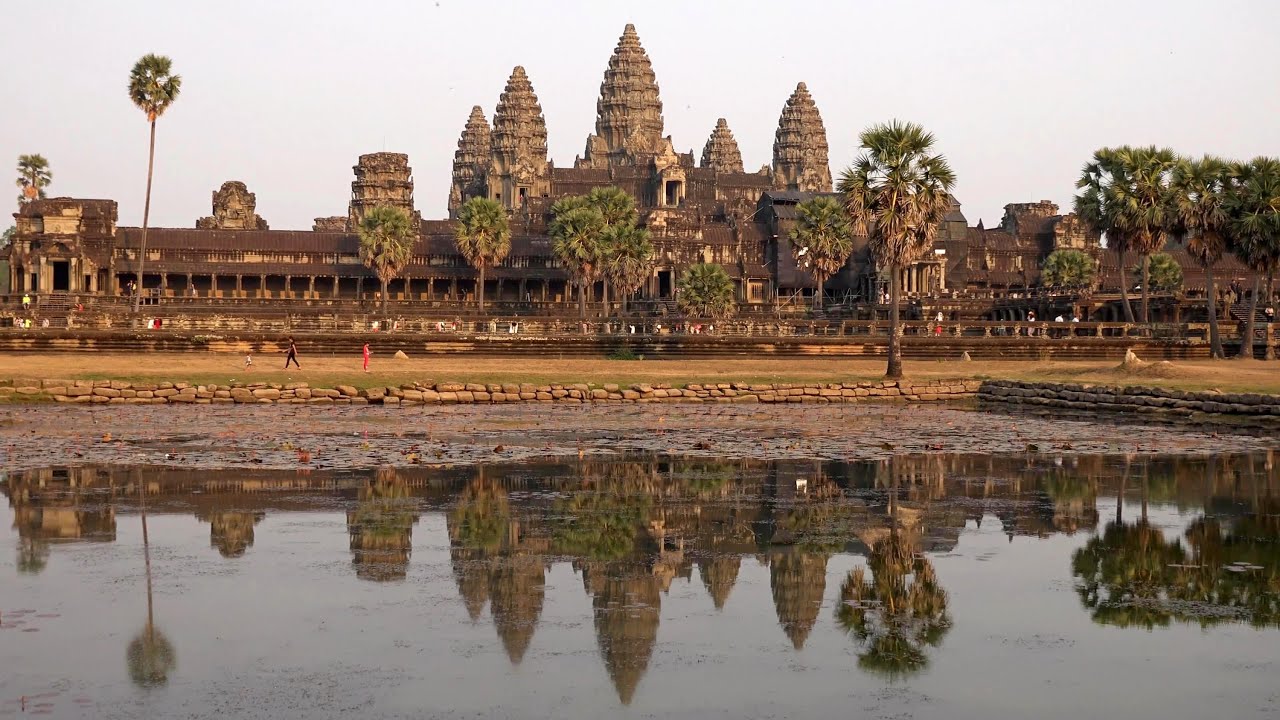The Temples of Angkor, Cambodia

The Temples of Angkor or Angkor Wat as they are popularly known, are one of those things to visit when one is traveling through Cambodia and Southeast Asia in general.
Stone vestiges of one of the most important cultures in Asia, the Angkor Wat Temples allow us to know part of the Khmer Empire’s culture.
Today they continue to maintain their importance, formerly political and economic, now simply tourist. Just as the Daigo-ji temple has an important influence as it is the main temple of the Onoryu sect of Shingon Buddhism, but it also extended its influence in politics with some members of political power holding important positions in the temple.
History
To know the history of the Temples of Angkor, we have to go back to the moment of maximum splendor of the Khmer Empire, when Angkor was the capital and the borders of the empire reached as far as Myanmar.
At this time, the city of Angkor was one of the great and modern cities in Asia, being an economic, cultural and military reference equivalent to other empires and societies throughout the world (Mayan, Inca, Roman, Greek and Arab).
As such the Khmer Empire came to a dusk during the invasions from present-day Thailand in the late 16th century with the fall of and abandonment of Angkor.
Over the centuries, the complex went unnoticed and forgotten, the jungle being its only main inhabitant, along with monks and pilgrims who continued to frequent the remains of Angkor Wat.
Origin of the temples of Angkor Wat
The Origin of the city (Angkor Thom or the Great City) must be sought in the Hindu and Sanskrit roots of the region, influenced by migratory and cultural currents from India.
This explains that many of the temples that are preserved show us all the typical details of this religion, many of them being dedicated in their beginning to the different deities (Shiva) and Hindu mystical conceptions (Mount Meru).
After the final abandonment of the city during the French colonial era when the famous Alexandre Henri Mouhout reunites the city and begins its studies and restoration.
Today the Angkor Temples, declared a World Heritage Site by UNESCO in 1992, are one of the main cultural attractions in Southeast Asia and are visited by thousands of tourists a year.
¿What to see in the Temples of Angkor?
The Angkor Wat Historical Park has an extension of almost 200 km² which makes the visit have to be divided into several days if you really want to appreciate all its beauty. The historical complex consists of the remains of Angkor Thom or the Great City, the most important temples being the following.
Angkor or Angkor Temple
Without doubt the most important of the whole complex and that has made it known to the whole world. Built as the mausoleum of King Suyavarman II and dedicated to the god Vishnu (Hindu) Angkor Wat or The Temple of the City was the most important religious site of the city and the empire.
Angkor Thom
Angkor Thom or the Big City is another must-see. As such they are the remains of the city and allow us to get an idea of how big it should have been.
Of what was the city, only the remains of the fortified wall and some of the most important temples of the historic complex remain, with their entrance doors and areas known as the Terrace of the Elephants and the Terrace of the Leper King.
Bayon Temple
This Temple is another of the most important monuments of the entire complex. Famous for its towers and faces, it is one of the most visited and photographed places in Angkor.
Its 54 towers and more than 200 faces make it unique in the whole enclosure. Its reliefs also stand out, in which we can see how the day-to-day life of the Angkor inhabitants of the time was.
Baphuom Temple
Pyramidal, it is another of the most prominent buildings. Apart from the incredible views it has, it is famous for hosting the only large reclining Buddha in the entire complex of which only the remains remain.
Pre Rup Temple
Located relatively close to Angkor Wat, the Pre Rup Temple is believed to have been the royal crematorium. Pyramid-shaped with 3 floors also offers incredible views of the entire complex from its highest part.
Ta Prohm Temple
Another of the most important temples in the entire complex. More than ceremonial importance, Ta Prohm became one of the most visited temples thanks to the movie Tomb Raider, from which some scenes were recorded here. The Temple above offers us incredible images of the jungle by literally eating the building.



